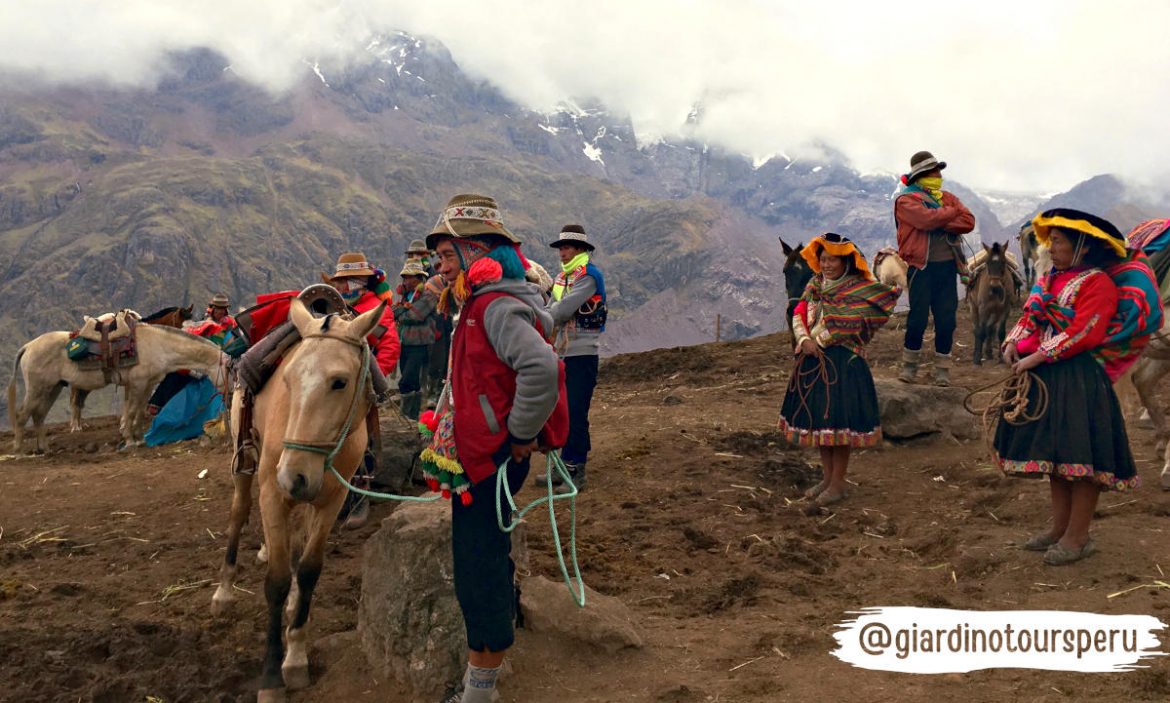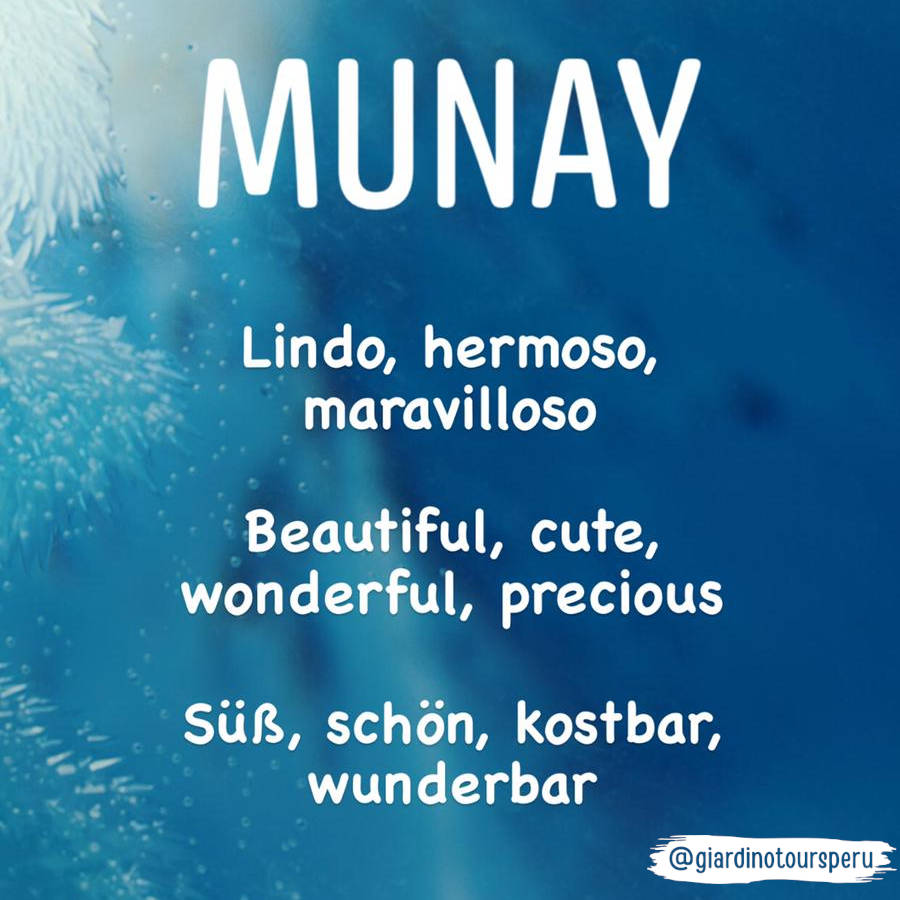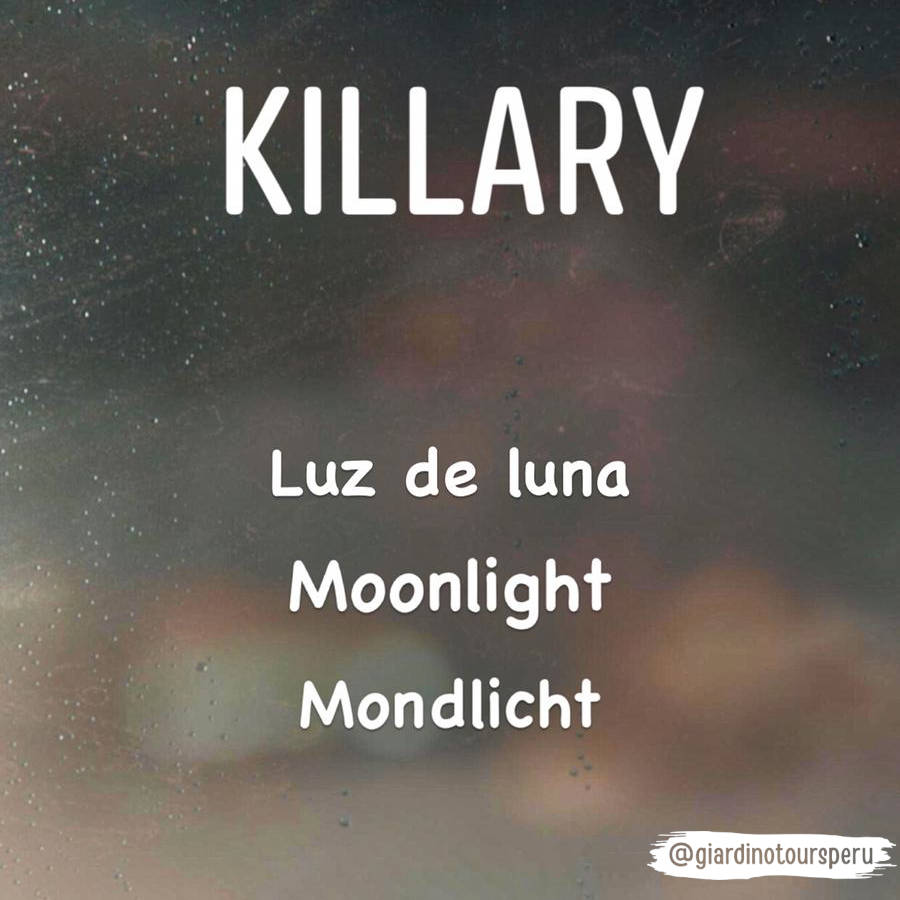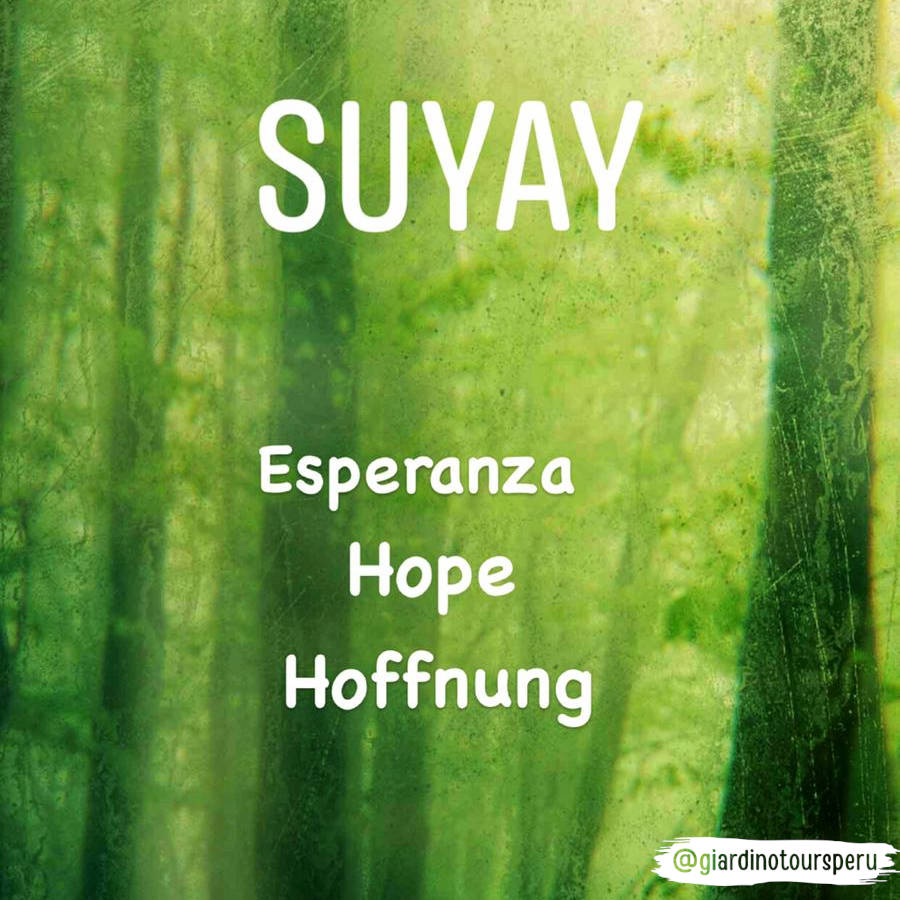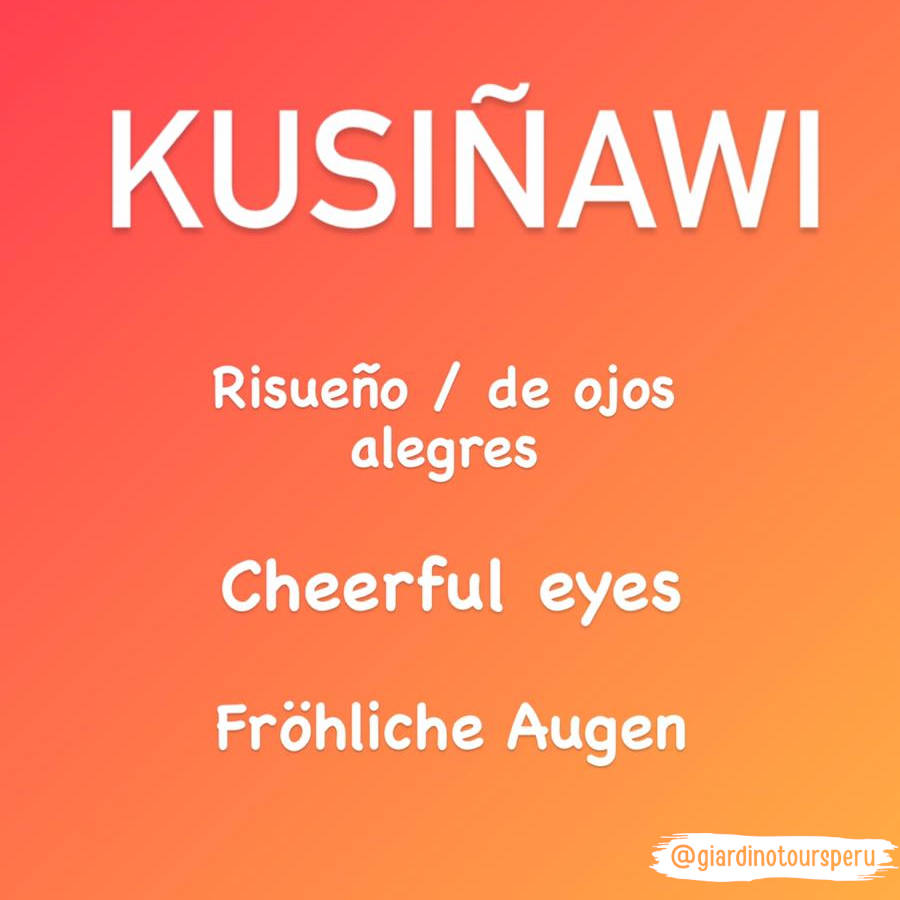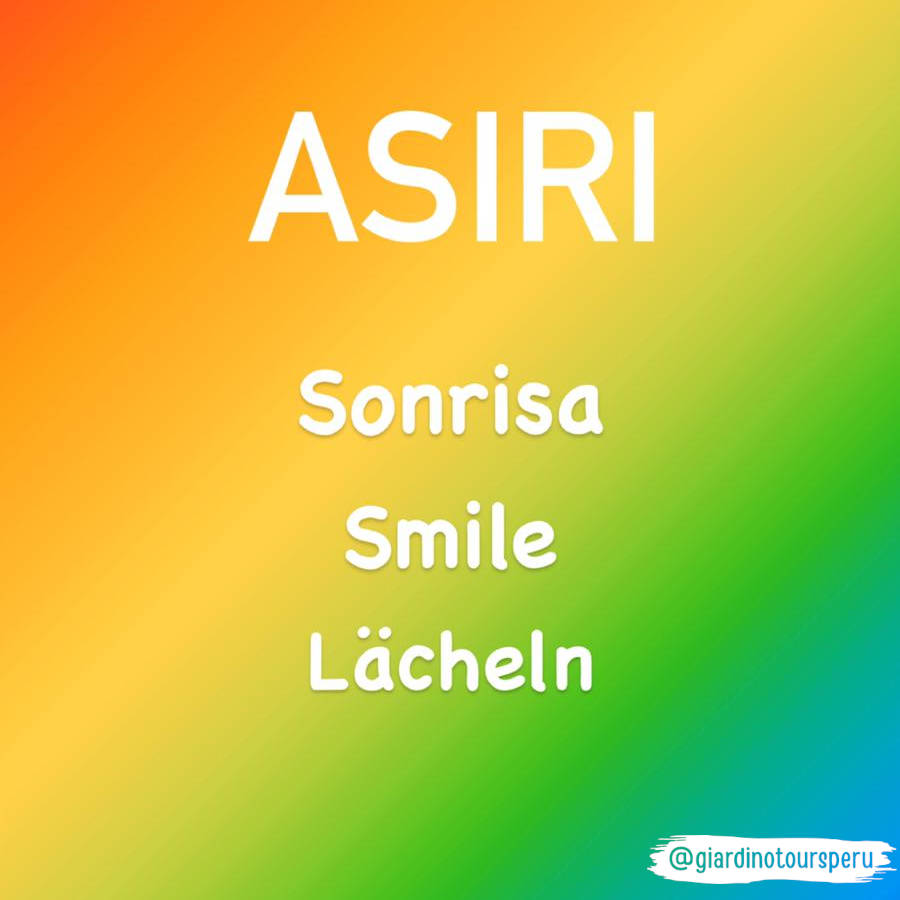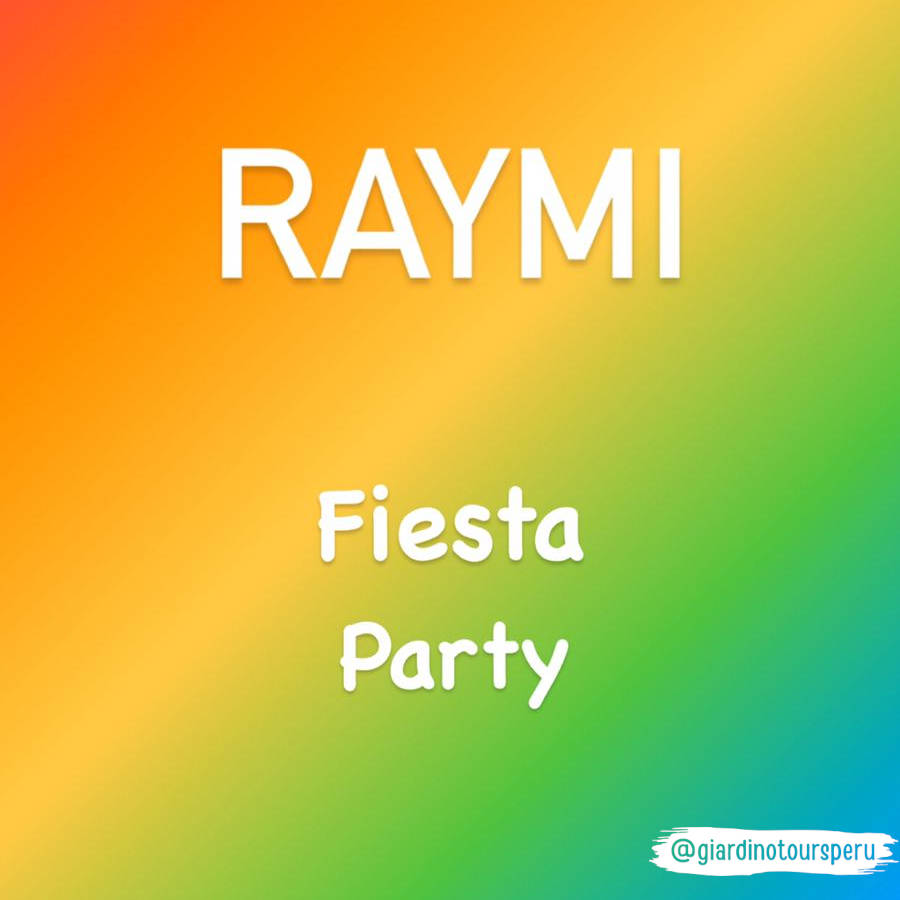When you travel to Peru for the first time, you will immediately realize that our country has a rich and admirable indigenous heritage. This makes Peru a beautiful and diverse destination.
For travellers who want to learn more and connect with indigenous Andean communities and their culture, it is a great help to know a little bit of the Quechua language. If you greet someone in quechua during your trip, no doubt the answer will be smiles among the people you visit and a more pleasant feeling of “welcome”.
The Quechua language called „Runasimi“ in Quechua means: runa ‘people’ + simi ‘speech,’ is a family of some 45 closely-related languages spoken in the Andean region of South America by close to 8 million people.
“If Latin is said to be the language of the angels, then Quechua is the language for expressing the subtleties of existence on Earth. That is why it is still alive.”
– Demetrio Túpac Yupanqui (New York Times- 2008 – Armed With a Pen, and Ready to Save the Incas’ Mother Tongue)
Beautiful words in Quechua!
Quechua is a official language in Peru, along with Spanish and Aymara. In rural areas, it is used for everyday communication in informal contexts. Since most Native speakers of Quechua are illiterate in their native language, it remains largely an oral language. In formal contexts, such as government, administration, commerce, education, and the media, Spanish is used. The only cultural domain where Quechua is used extensively is traditional Andean music.
„One example of this important momentum is the 2015 adoption of Indigenous Andean principles in Quechua, by the United Nations General Assembly: The principles of Ama Sua (“you shall not steal”), Ama llulla (“you shall not lie”) and Ama Quella (“you shall not be lazy”) were distinguished by the international body. – Penn Arts & Sciences / United Nations Secretary-General.
“Quechua is such a beautiful language,” said Ms. Ambía, a retired teacher and social worker. “I want to help preserve it. I want for people to feel proud of our heritage, to feel proud about our culture.” – Elva Ambía (The Wall Street journal – 2014 – Reviving a Fading Language Called Quechua )
Some useful words in Quechua for those who travel to Peru
If you find yourself in the jungle, or in the central or southern part of the Andes in Peru, you will find that the language varies, but in general with these words you will have a good chabnce of comunication. Remember that Quechua and Spanish have somewhat similar phonetics (ex.: the double /l/ or “ll” sound like an English /y/).
If you meet somebody fort he First time:
Rimaykullayki: It is the most widespread form of greeting, this amounts to: good morning, good afternoon and good night of Spanish. It literally means “I speak to you politely.”
Chaskillaykim: It literally means “I answer the greeting.”
If you meet a friend or you already know the person:
Imaynallam?: How are you?
Allinllanchu: Are you ok?
Allinllam: I’m well, thank you.
Somaq mihuna: That means: „This is amazing food“ If somebody hears you say this at their restaurant or food stand, they will be very happy.
Sulpayki: Thank you (The most important Word in the world!)
Tinkunanchiskama: I will see you later, farewell)
Paqarin kama: See you tomorrow
Tupananchikama: Goodbye in general.
Allin P’unchay: Good morning
Allin Sukha: Good afternoon
Allin Tuta: Good night
Did You Know?
These words came into English from Quechua via Spanish:
coca: kuca, the native name of the plant
condor: kuntur, the native name for the bird
guano: huanu ‘dung’
jerky: ch’arki ‘dried flesh’
llama: llama, the native name of the animal (with Spanish spelling)
puma: puma, native name of the animal
vicuña: wikuna, the native name of the animal
Are you starting planning a journey to Peru? Contact our team of expert travel advisors and lets together organize your perfect trip. 🙂
Giardino Tours – Blog
#ITravelwithGiardino #OneTripManyExperiences

